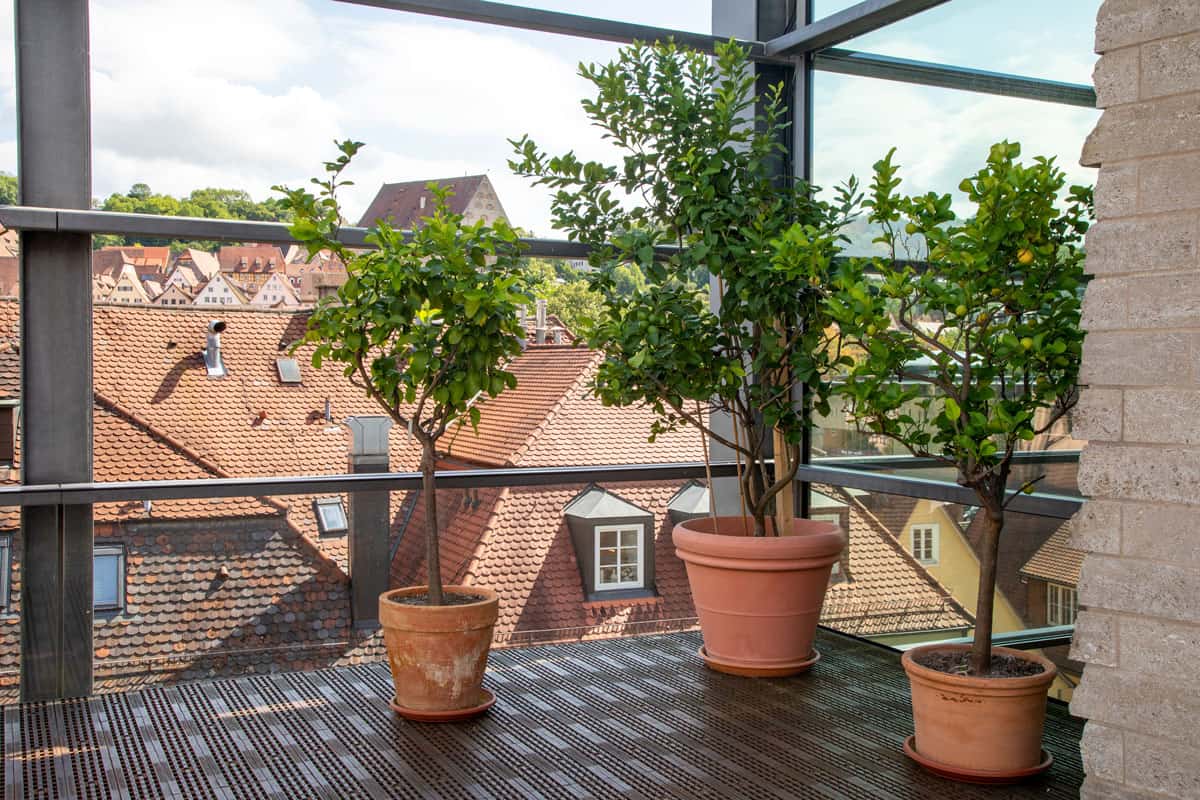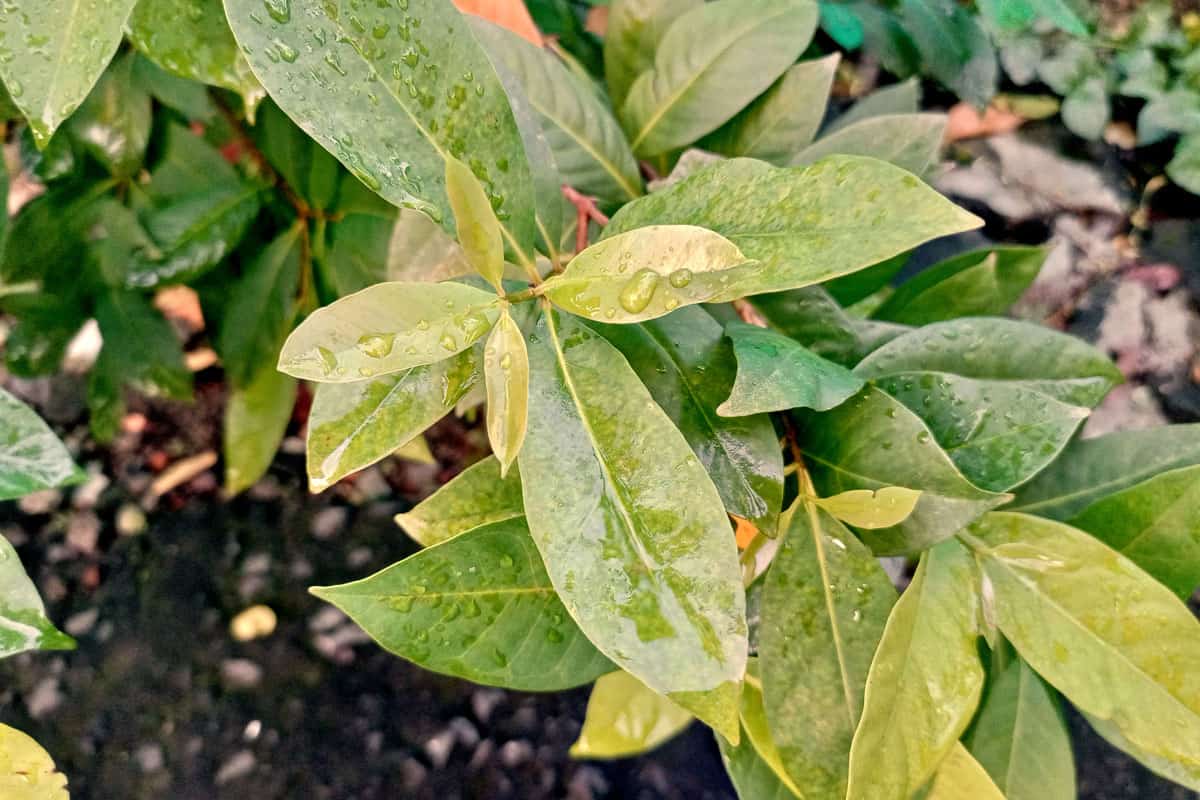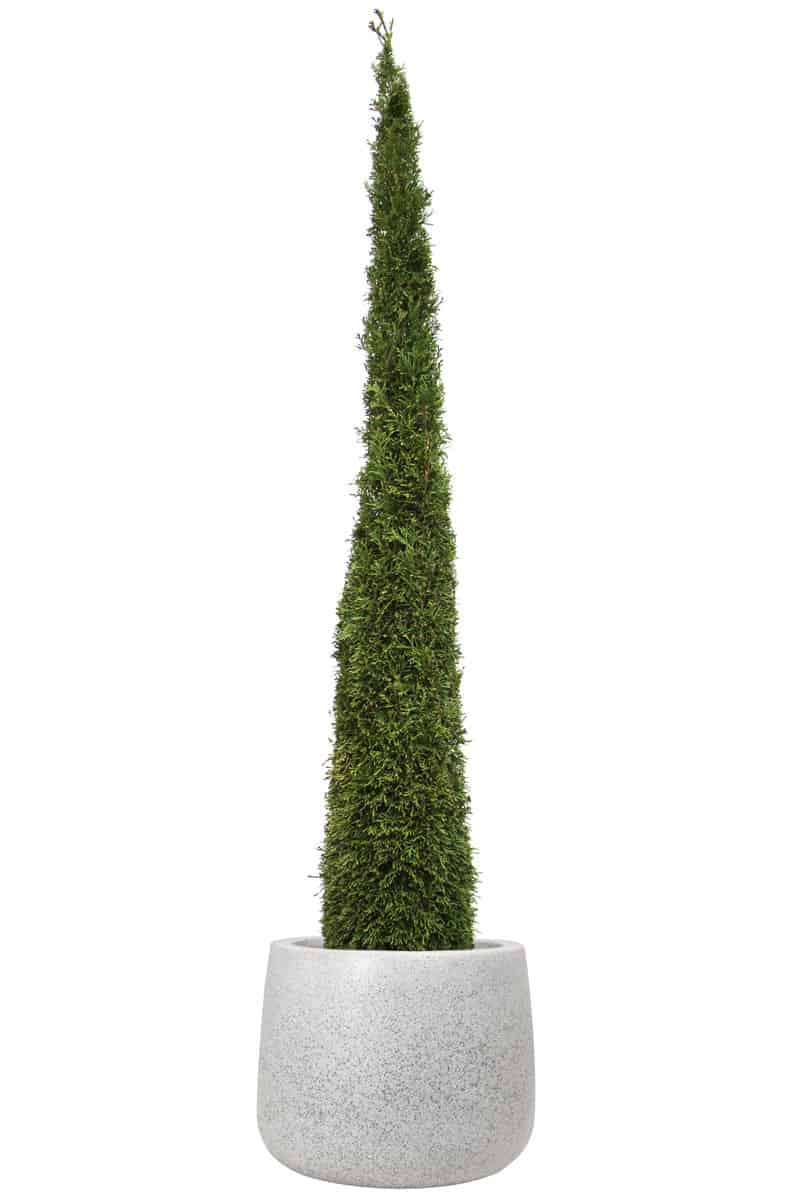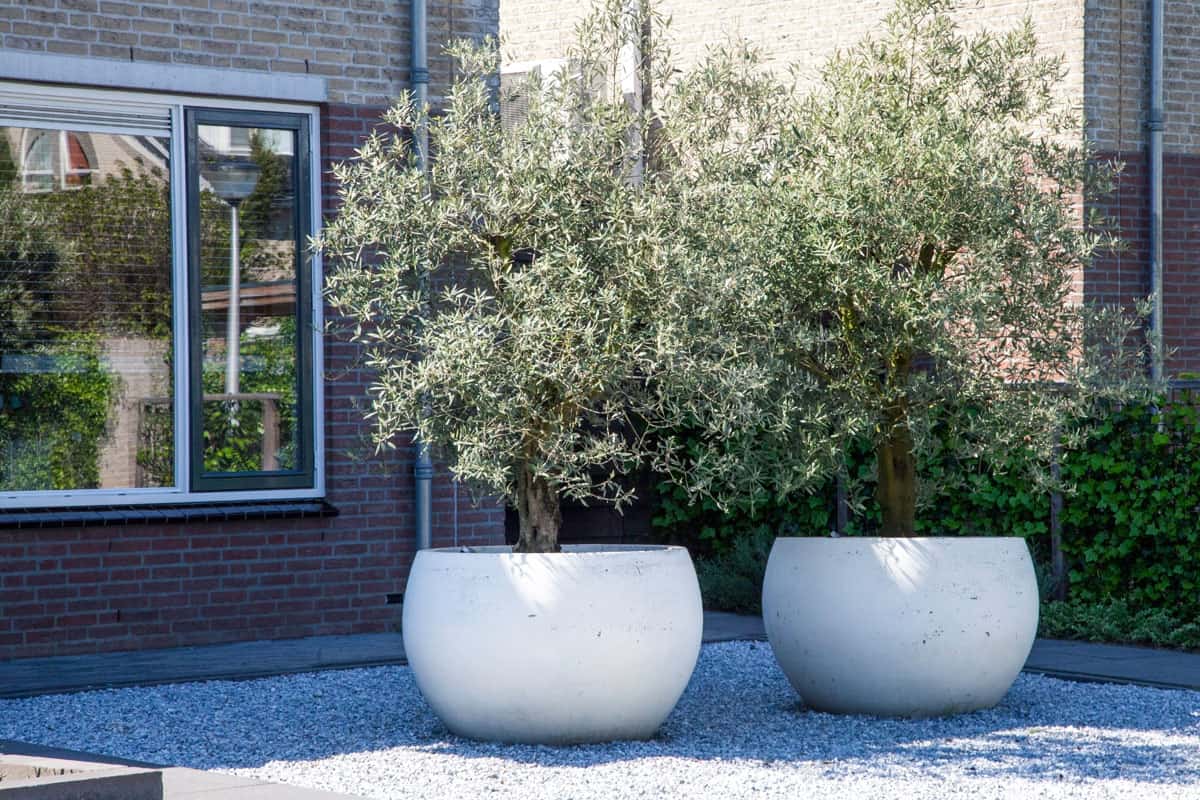Trees are usually grown on the ground to add a natural look that enhances yards, gardens, and landscapes. Certain varieties may be cultivated in pots and large planters and can develop and live for decades. We have researched everything you need to know regarding growing trees in a pot, and how to properly care for them.
Trees can survive and live between 20 to 30 years in pots, some even longer if maintained properly. The right species, appropriate care, container size, and regular repotting all contribute to your tree's health and longevity.
There are certain benefits and advantages of growing trees in pots and containers. They may be moved around and placed in your preferred areas to accentuate yards, gardens, patios, decks, and other outdoor spaces. The article aims to inform you about the development needs of trees growing in pots, and when to transplant them.

Care And Maintenance
The basic elements needed for plants, whether grown on the ground or in pots, include proper watering, sunlight exposure, soil composition, and fertilizer application. Container-grown trees are confined and cannot benefit from the environment like soil cultivated species.

Inasmuch as they require the same growth factors, potted trees need specialized care mainly due to the difference in spatial conditions.
Watering
Generally, potted trees need to be watered more often since they are more prone to drying up. However, several factors such as sunlight exposure, temperature, and climate, affect the overall watering requirements.
Regularly check if the soil is completely dry then water your tree thoroughly.
Sunlight
Trees require adequate sunlight exposure. It is best to place your potted plant where it can receive six hours of light per day. It is best to know the variety you own because some species are well-adapted to partial shade.
Fertilizers
The soil nutrients are depleted over time, and the best way to replace lost elements is by the application of fertilizers. Since your tree is contained in a planter, it cannot receive proper nutrients.
Fertilize your plant once every two weeks with organic granules, and to facilitate root development, annually apply a slow-release fertilizer that is high in phosphorus.
Mulching can also be done since it is composed of organic matter. When most of the mulch has decomposed, replace it with soil rich in organic content.
Note: Young trees are sensitive to fertilizers and chemicals so only feed them during their peak growing season - normally in spring.
Potting Mix
The basic composition of your potting mix should include an organic component that provides nutrients and an inorganic portion that allows proper drainage.
Organic matter includes peat moss, shredded coconut husk, compost, and rice hull. They nourish the tree by providing essential elements like nitrogen, phosphorus, magnesium, and other minerals.
Proper drainage is ensured when you add pumice, coarse sand, crushed granite, or pebbles. The presence of these particles will prevent soil compacting and allow the root system to breathe and propagate.
Combine equal proportions of the organic and inorganic components making sure they are thoroughly mixed. There should at least be three inches of soil in the bottom of the pot before you set the tree. Fill in the rest of the container with your potting mix and water generously right away to let the materials settle around the roots and the base of the tree.
You may add a layer of mulch around the top to retain moisture, regulate temperature and prevent weed growth.
Pots And Planters
There are several planters you may use such as plastics, clay pots, ceramics, or containers like fiberglass or rubberized materials that complement the appearance of the tree and adhere to your preference. However, they each have their advantages and negative points that must be considered to optimize the health and survival of the tree.
Plastic pots are relatively light and easy to move around, they come in several colors and designs that blend and complement the yard or garden landscape.
However, prolonged exposure to weather extremes can make the material brittle and crack over time. And since they are lightweight, strong winds tend to topple them over.
Clay pots feature a worn, aged and traditional look found in most parks and gardens. They provide a steady base for your tree during storms or bad weather. Large clay pots may be too heavy to move around and the material is prone to chipping and cracking.
There is a wide selection of ready-made pots and containers made of lightweight but durable materials such as rubberized and fiberglass. They feature various colors, designs, and shapes but are generally pricier.
The dimensions of the container must be twice the size of the rootball in height and width. This will give the roots ample room to grow and develop and provide adequate anchor for the tree.
Repotting
As the tree develops, so will the root system and eventually run out of space to grow and become pot-bound. Once you notice a general slowdown in its growth, fruit and foliage production, and overall vigor, it may be time to repot your tree.
To be on the safe side, replace the container with a bigger pot every two years. The new planter should have at least four inches of clearance on all sides, below and above the rootball.
If you wish to reuse the same pot, root pruning is an alternative. Gently take the tree off its container and cut away a few inches of roots around the ball.
Layer the bottom with three inches of potting mix and reposition the tree, then fill the gaps with fresh organic and inorganic material. After pruning, it is natural for some trees to lose their foliage, they usually recover when new roots form and develop.
What Are The Best Trees For Pots?
Dwarf Alberta White Spruce (Picea Glauca)

Dwarf white spruce is an evergreen conifer that is a native of North America. It is perfect as a potted tree since it grows slowly - typically two to four inches every year - reaching a mature height of 13 feet. It is popular amongst gardeners because of its easy care and maintenance.
Since it is grown in a planter, water your tree once every week or when the first three inches of the soil is dry. The plant is deer resistant, however, it is still prone to pest infestation such as spider mite and bagworm attacks which is why it is best to apply preventive treatment once every year.
Bay Tree

Bay trees, also referred to as Laurus nobilis, are evergreen trees that produce yellow-green flowers and berry-like fruits. It originally covered or dominated the Mediterranean region, but its natural habitat has been devastated because of climate change.
It is a slow-growing tree that grows 7 to 18 meters (23 to 59 feet) tall, however, it reaches a height of 4 to 6 feet when contained in a pot. Although the leaves are used as herbs or spices for cooking, they are considered poisonous to cats, dogs, and horses.
The tree itself prefers a moist well-draining soil. Since they have shallow roots, frequent watering is necessary, particularly during long dry spells. Do not overwater but keep the soil moist.
Dwarf Japanese Maple Tree

Dwarf Japanese maple, also known as Acer palmatum, is also a slow-growing compact tree that grows one to two feet tall every year and matures at a height of three to eight feet depending on the variety. It is usually used for bonsai and rock gardens, but they also do well as potted trees.
There are several varieties of Japanese maple, all of which consists of a wide assortment of foliage shapes and colors - vibrant shades of greens, orange, reds, yellows, and purples.
When growing this particular tree, the general climate is a factor. The leaves of the tree may change in appearance and appear discolored but this condition has nothing to do with the general health of the tree.
Providing the right amount of sunlight can be tricky because too much exposure can harm the leaves while too little can result in a greenish foliage - brilliant colors of red will not appear.
Italian Cypress

Italian cypress or Cupressus sempervirens is a rapidly developing tree when given the right growing conditions. It grows at a height of three feet every year and it can reach up to 70 feet tall.
Before planting or buying cypress in a tree nursery, make sure that the climate will allow it to thrive. They prefer hot and dry environments and are tolerant of long dry spells. Do not let it sit in wet soggy soil.
In Closing

Potted trees require additional care and maintenance because they rely mainly on external sources. We hope this article helped you with the proper ways of caring for your tree. Happy planting!
How To Reduce Nitrogen In Potted Plants
Why Is My Bonsai Tree Trunk Squishy? [And What To Do About It]
